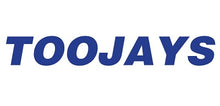Introduction
Too often meetings are seen as a chore, but they don't have to be! With the right mindset and good planning, you can run meetings that ensure productivity efficiency.
To start on the right foot, it's important to know that there are two types of meetings: administrative (i.e., what do we need?) and strategic (i.e., how will this help us?). The first should always precede the second because it lays out all necessary information for those in attendance. It also provides an opportunity for participants to clarify any questions or concerns before moving forward with the meeting agenda - which is where goals are set and strategies developed. The following tips will help you take this process one step further so your next meeting accomplishes your goals.
What type of meeting it will be - administrative or strategic?
The first thing you should do is decide what type of meeting it will be - administrative or strategic. Administrative meetings are for tasks that need to be completed, while strategic meetings are for making decisions that will help the company reach its goals. It's crucial to determine what type of meeting it will be as it will impact the structure and format of the meeting.
Defining Administrative meetings
Administrative meetings, which are the kind of meeting that most people dread, should have a clear purpose and a list of action items to be completed. They should also have a timeline for completion and aim to make best utilisation of the productivity of labour.
To make sure you make any decision at an administrative meeting, it is important to create a voting procedure ahead of time. In this way, the person in charge knows who has the power to make decisions and who does not. The discussion will then be focused on resolving disagreements that arise from conflicting opinions instead of getting bogged down in them.
To keep your Administrative meeting running smoothly, it's important to set a time limit for completing each point on the agenda. This will help people stay focused on the task at hand and move the meeting along without procrastinating.
Defining Strategic meetings
Strategic meetings are important because they allow for the exchange of information and the development of solutions to organizational problems. They should not be confused with operational meetings, which are focused on the implementation of specific tasks.

The purpose of a meeting
There is nothing more frustrating than attending a meeting and feeling like it has not been well thought out. The following are key questions to ask when you are organizing a meeting:
- What is the desired outcome?
- Who should be involved in the meeting?
- Why is this person or organization needed for this particular topic?
- When and where should we meet?
- Why do we need to have a meeting now and not wait until later?
- How long will the meeting take?
When responding to these questions, you can then design an agenda that will include the most important elements to keep your meeting as productive as possible. For example, making sure that everyone understands their role in the meeting and that they have enough time to develop a thoughtful response. If you can, try to avoid scheduling multiple meetings at once, especially if the same people are involved in each meeting.
Attendees: Choosing who to invite
It is important to think about who you want at your meeting and make sure they are invited. Some people may only attend certain meetings and some may not be very involved with the topic. For example, if you're organizing a meeting about new rules for the company, you might want to invite the HR manager and the president of the company. You need people who can make decisions in attendance. Failure to commit or give a decision may mean delaying the outcome or progressing a project.
Mistakes people make
Mishandling all aspects of a meeting can result in wasted time, frustration, or confusion. During an effective meeting, all participants are clear on what they are expected to do before the meeting begins, again ensuring productivity of labour. It is also important that everyone feels comfortable speaking up when necessary.
Make sure that plenty of time is left for discussion during your meeting's agenda by allocating more time for any item that seems to require extra attention. When there are new ideas presented during the meeting, avoid simply shooting them down or making quick decisions about whether to use them or not. Always provide a clear explanation of why something is being suggested and/or rejected so everyone present can understand your point of view on the topic before moving on.
Conclusion
The type of meeting you choose to have will determine what kind of attendees and agenda items are necessary. From Administrative meetings, which focus on making decisions and defining action steps for the future, to Strategic meetings that allow for brainstorming new ideas or information exchange- there is a time and place for every type of meeting.
The most important thing about any productive meeting is clear expectations from all parties involved as well as an open mind when it comes to hearing other perspectives on the topic. If everyone is prepared and willing to work together, a productive meeting will always result!
For further insights and practical advice on Effective Meetings download our FREE Workbook Guide.

Leave a comment